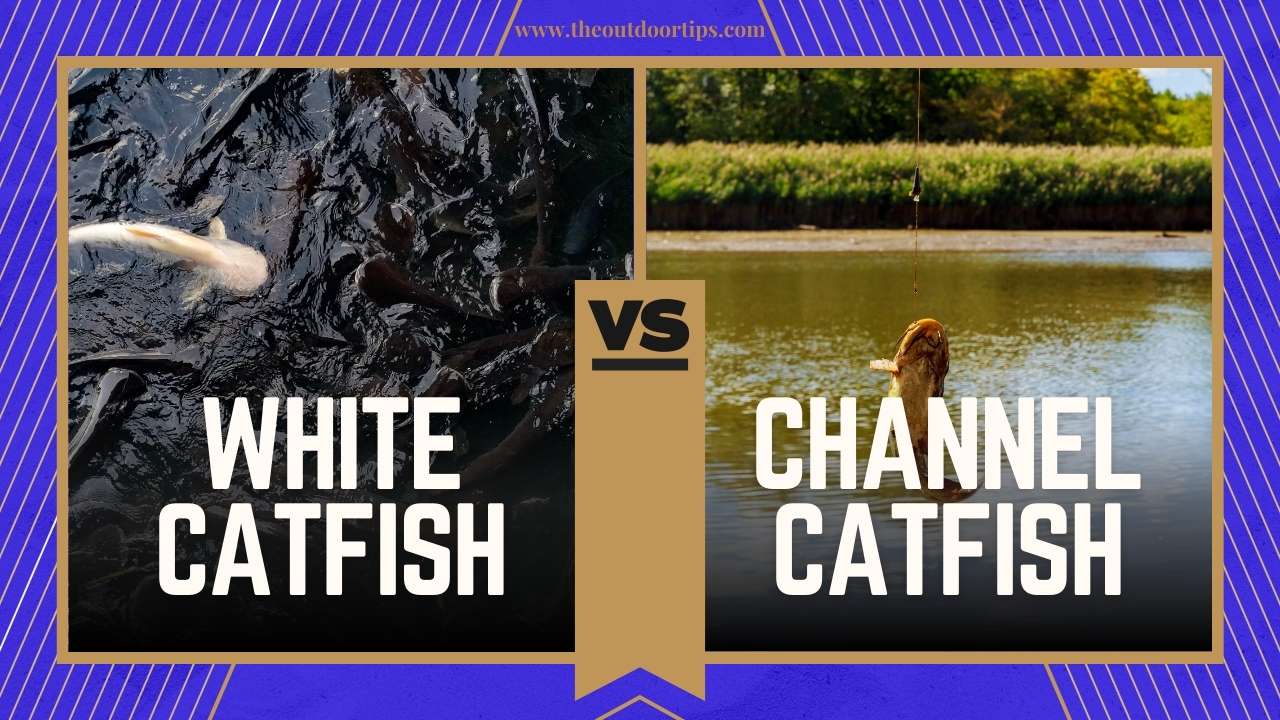In the realm of freshwater angling, the world of catfish offers a diverse and captivating array of species. Among these whiskered giants, the white catfish and channel catfish stand out as popular targets for anglers seeking thrilling battles and rewarding catches. These two species exhibit distinct physical traits, behaviors, and habitat preferences that set them apart. In this comprehensive article, we will embark on an in-depth exploration of the differences between white catfish and channel catfish, delving into their features, habitats, behaviors, and the unique angling experiences they offer.

White Catfish: Features and Identification
The white catfish (Ameiurus catus) presents itself with an understated yet distinctive appearance. Its olive-gray coloration is complemented by a lighter underbelly, setting it apart from other catfish species. While it may not reach the colossal sizes of some of its relatives, the white catfish compensates with a feisty spirit that makes it a rewarding catch for anglers. One of its defining characteristics is the rounded tail, which distinguishes it from other species boasting forked tails.
Channel Catfish: Features and Identification
In stark contrast, the channel catfish (Ictalurus punctatus) possesses a more elongated body with a prominent forked tail, rendering it instantly recognizable. Its coloration varies, ranging from dark gray to olive-brown on the upper side and fading to a lighter hue on the underbelly. An identifying feature of the channel catfish is the series of dark spots that adorn its sides. Caution is advised when handling this species due to the sharp spines present in its pectoral and dorsal fins.
Habitat and Distribution
White catfish are primarily found in ponds, lakes, and slow-moving rivers, exhibiting a preference for freshwater environments. This species boasts a broad distribution range, thriving along the Atlantic seaboard of the United States. Their adaptability allows them to flourish in a variety of water conditions, showcasing their resilience in the face of changing habitats.
On the other hand, the channel catfish thrives in diverse water bodies, including rivers, reservoirs, and lakes. Its widespread distribution across North America has solidified its status as a prime target for anglers in various regions. Channel catfish are commonly found in areas with moderate currents and submerged structures, as these conditions provide ample opportunities for them to locate prey.
Behavior and Feeding Habits
White catfish exhibit an omnivorous feeding behavior, allowing them to consume a diverse range of food sources. While they primarily feed on aquatic insects, crustaceans, and small fish, they also exhibit opportunistic scavenging tendencies. This dietary flexibility equips them to adapt to various environments and positions them as valuable contributors to the balance of aquatic ecosystems.
Conversely, the channel catfish excels as a proficient predator, primarily subsisting on fish, crustaceans, and aquatic insects. Renowned for their exceptional sense of smell, channel catfish use this ability to detect food sources in their habitat. Their hunting strategies encompass both active pursuit and patient ambush tactics, with their well-developed sensory systems playing a pivotal role in locating and securing prey.
Angling Appeal and Culinary Qualities
For anglers seeking a rewarding catch, the white catfish delivers an exciting angling experience despite its smaller size. Its willingness to take bait and its spirited fighting behavior provide a sense of accomplishment. While white catfish may not reach the monumental sizes of some other species, their abundance and sporting qualities make them a popular target among recreational anglers.
The channel catfish occupies a central role in the world of freshwater angling. Its larger size and tenacious fighting spirit ensure an exhilarating battle that appeals to seasoned anglers and novices alike. When hooked, channel catfish put up a fierce struggle, showcasing their impressive strength and determination. Beyond the thrill of the fight, channel catfish are prized for their culinary attributes, with their meat being highly regarded for its taste and texture.
Identification Comparison
White Catfish
- Coloration: Olive-gray with a lighter underbelly
- Tail Shape: Rounded
- Size: Smaller size
- Distribution: Atlantic seaboard
Channel Catfish
- Coloration: Dark gray to olive-brown with spots
- Tail Shape: Forked
- Size: Larger size
- Distribution: North America
Habitat and Distribution Comparison
White Catfish
- Preferred Habitats: Ponds, lakes, slow-moving rivers
- Distribution: Atlantic seaboard
- Adaptability: Flourishes in diverse freshwater environments
Channel Catfish
- Preferred Habitats: Rivers, reservoirs, lakes
- Distribution: Across North America
- Adaptability: Thrives in various aquatic habitats
Feeding Habits Comparison
White Catfish
- Feeding Behavior: Omnivorous, opportunistic scavenger
- Diet: Aquatic insects, crustaceans, small fish
Channel Catfish
- Feeding Behavior: Predominantly carnivorous predator
- Diet: Fish, crustaceans, aquatic insects
Comparison Table
| Aspect | White Catfish | Channel Catfish |
|---|---|---|
| Identification | Olive-gray color, rounded tail | Dark gray to olive-brown, forked tail |
| Size | Smaller size | Larger size |
| Habitat Preference | Freshwater environments | Diverse water bodies |
| Behavior | Omnivorous, opportunistic scavenger | Predominantly carnivorous predator |
| Angling Appeal | Spirited fight, exciting experience | Strong fight, exhilarating challenge |
| Culinary Preference | Varied, culinary potential | Highly prized taste and texture |
Final Thoughts
In the fascinating realm of freshwater angling, the white catfish and channel catfish emerge as distinct entities, each contributing their own allure to the angling experience. The white catfish, with its tenacious spirit and versatility, offers an engaging challenge that rewards anglers with a spirited fight. Meanwhile, the channel catfish’s larger size and formidable strength provide an adrenaline-pumping battle that leaves a lasting impression.
